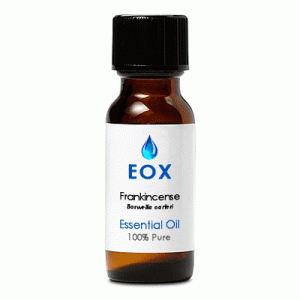 As more information becomes available about the use of particular essential oils for specific aromatherapy applications, the known compounds of importance become benchmarks for quality that soon become paramount in the perception of its market value. Essentially, the compound levels evolve into a quality-metric in the marketplace.
As more information becomes available about the use of particular essential oils for specific aromatherapy applications, the known compounds of importance become benchmarks for quality that soon become paramount in the perception of its market value. Essentially, the compound levels evolve into a quality-metric in the marketplace.An example of this would be an expectation of a high level of carvacrol in oregano oil (Origanum vulgare) or kavalactones in kava kava (Piper methysticum) extract. It is these compounds that are often considered to be the active ingredients (from the allopathic point of view) and they become the key ingredient of importance, and thus, the market drivers.
Recently (2/9/2010) the BBC News ran the story 'Frankincense - a cure for cancer?' which discusses the discoveries from joint field research between an overseas immunologist and medical scientists from the University of Oklahoma.
The immunologist, Mahmoud Suhail, has observed that frankincense oil arrests the spreading of cancer and induces already cancerous cells to close themselves down.
He is quoted to say "Cancer starts when the DNA code within the cell's nucleus becomes corrupted. It seems frankincense has a re-set function. It can tell the cell what the right DNA code should be."
"Frankincense [oil] separates the 'brain' of the cancerous cell - the nucleus - from the 'body' - the cytoplasm, and closes down the nucleus to stop it reproducing corrupted DNA codes."
While that information seems promising for many, the balance of the article goes on to discuss the non-holistic ideology behind their current efforts to isolate the responsible compound, although they probably wouldn't say it that way.
Basically, they admit that the frankincense oil works by itself, but they are attempting to narrow the list of the 17 possible agents (isolated compounds occurring within the oil) down to one. The reason they give is that some of the compounds (although they didn't name them) are allergenic, so it cannot be administered as a whole oil.
Meanwhile, the current alternative to a treatment that is possibly allergenic is bombardment with radiation that is so toxic every hair on one's body falls out along with fingernails and toenails which turn completely black just prior to falling out. BUT, they don't want to administer something to which someone might have an allergic reaction?
Makes you wonder if these guys ever heard the term 'therapeutic margin' in their long years of medical studies? Surely they have, but the bottom line isn't about possible allergens, it's about isolating a compound that they can pillage from nature and then patent as a pharmaceutical. Then they will spend millions of dollars on research to see if a 'nature identical' (lab created) compound will do the same thing, but cost a lot less than cultivating frankincense, and then they won't have to bother with nature at all.
In the meantime the demand for frankincense oil will increase and the prices will rise sharply. The good news for the aromatherapy world is that after the dust settles, the prices for frankincense will probably level out to a reasonable point because the pharmaceutical manufacturers aren't interested in continuing to use something natural. The bad news is that while they are positioning themselves to control one of the most valuable markets in the health industry, people will continue to choose to undergo chemotherapy because they don't feel like they have another choice.
In the article, the 'tiny' doses of isolated compounds that they discuss administering are never quantified, nor is the method of administration, but it does state that in the next few months they should have identified the compound within frankincense oil that eliminates cancer, or at least some types of cancer.
So, in the short term the increase in demand for frankincense oil will drive the price up once the news really spreads, and there will be a newly-named market driver that has an expected level within the oil. That percentage will become the new benchmark that will be expected of a quality oil.
Of course, with human nature as enterprising as it is, this new information will lead to increased cases of chemical adulteration of some of the oil on the market to raise its value by adding enough of the newly-important isolate to the truly distilled oil to provide a standardized product with a stable market value. Therefore, increased testing measures will become necessary to be assured of pure frankincense oil, but that is a matter for another post.
Live Natural. Go Pure!
Michael
Tags: cancer, frankincense oil, quality standard




Great article. I have faith that more and more people will become enlightened and turn to natural alternatives for health therapies and to achieve optimal vibrant health. It won’t happen overnight, but it is happening. We are the teachers, continue to spread the knowledge.
[Reply]
Great Article indeed! I too have faith that more and more people will be so tired of the toxicity of the products from our pharmaceuticals that they will take that leap into the void and begin trying alternative methods to optimize their health. Yes, we are the teachers and forerunners and must continue to spread the wonderful knowledge; reeling people back in to taking their health back into their hands.
[Reply]
It is indeed a wonderful analytic point of view, but in order to explain the recent strategy of the research allow me to number few points;
-It is essential to mention that Professor Lin H.K. (Oklahoma Medical Science University) has the major and most important contribution in this research.
– It is definite by now and after testing the effect of frankincense essential oil on few cancer cell lines (cancer cell cultures) e.g. bladder cancer, pancreatic cancer, and malignant melanoma, that frankincense essential oil is capable of inducing cancer cell apoptosis (cell death) during which the cancer cell cytoplasm shrink and undergo lyses even before nucleus fragmentation (which is a hall mark of apoptosis) which means that the nucleus cease supporting unprogrammed cell multiplication (an effect that point that some components of frankincense essential oil target post-transcription control of protein synthesis which is the last known step of proteins synthesis inside the cytoplasm).
– Toxic index in In-Vitro study (laboratory study) was about 2,75 (which means that toxic concentration that was necessary to affect normal transitional epithelium bladder cells was 2.75 folds therapeutic concentration which terminates all cancer cells in culture within few hours preserving all normal cells).
– In Vivo study (human study) means that the medicine should be administered into the body (by different ways including oral intake, sublingual intake, and Parenteral administration). Frankincense essential oil (as well as frankincense resin) is safe to be taken by mouth and in fact it is a traditional treatment in the Sultanate of Oman. The standard tolerated dose is about 0.04ml of the essential oil per Kg of body weight as estimated by Human Equivalent Dose (HED) which is a scientific way to correlate between human and animal dose (after testing the dose on animals). Still the dose should be corrected if the patient is suffering from elevated liver enzymes or impaired renal function test (as all medicine may require).
As most advanced cases of cancer develop metastasis and hence a Parenteral route of administration is mandatory ,and exclusion of components that may cause hepatotoxicity in particular when given into blood circulation is a most.
Now, you may ask ”So at least we can start by now treating newly diagnosed patients with bladder cancer who present without metastasis?”. By logic the answer is YES but according to FDA regulations, we cannot state that frankincense oil can cure cancer till fulfill 3 requirements; It should be proved safe, tolerable and effective (animal study then human trial). So meanwhile it is allowed only to state that frankincense essential oil can HELP in patients with cancer.
-Frankincense resin market is absolutely not affected (till the moment at least) by the research result, and to give you a hint; Annual production of Frankincense resin in the Sultanate of Oman only is about 7000 MT and increasing. 34 MT is enough for all cancer patients in USA at the uppermost.
-There are no attempts to make a pharmaceutical copy of active components, and in fact, no pharmaceutical industries are involved in the research. The recent work is to find out the optimum method for extracting the essential oil then fractionation based on cancer cell line cultures results.
The interview with Mr. Jeremy Howell (BBC reporter) was hard indeed as he was keep telling me to simplify my words and use common language and it took us about 11 rounds! But I agree with his point of view as the program target all people.
We would be glad to answer any enquiry as the research is indeed an open source one and not meant for anything but serving human.
Sincerely
M. Suhail (M.D.)
[Reply]
michael Reply:
May 9th, 2010 at 10:04 am
Thank you Mahmoud, for posting a reply to this article. I appreciate the constraints in which you are working.
Can you send me more data/statistics/studies about the usage of the oil and how it has “helped” cancer patients in non-US regions, particularly in your region? I could then pass that information along to our subscribers. It could be helpful to a lot of people and it would be greatly appreciated. I know we cannot say “cure” yet, but “helping” is a good start.
Please keep me posted on any progress you are having and I will be glad to put the word out.
Sincerely,
Michael
[Reply]
Dr. M. Suhail Reply:
May 10th, 2010 at 4:53 pm
Giving that data build up is so fast and the spectrum of cancer lines frankincense essential oil is effective on keep widening, we cannot find the time to blot statistics.
In fact we, the research group is planning to establish a website to publish all the details and progress (open source) in the near future.
Results are extremely promising but a formal clinical trial is not yet established.
Just imagine; the spectrum of the research start from the soil, the tree, climate effect, processing of resin, different methods of extraction by custom made equipments, chemical analysis, cell line cultures and testing, different molecular biology techniques, pathology, clinical interpretation,,,,etc. and we are only 4 researches thousands of miles away and working without any resources (so every one has its basic job to do!). i doubt that any one of the research group slept well for the last 2 years.
Sincerely,
M. Suhail
[Reply]
M. Suhail Reply:
March 19th, 2011 at 8:44 pm
Just an update regarding dose;
0.18 – 0.2 ml per kg body weight per day was tested to be well tolerated and matching maximum therapeutic effect. It was proved safe clinically and by biochemical analysis.
Regards
M. Suhail
[Reply]
Jovan Tadic Reply:
May 9th, 2011 at 10:02 pm
Dear M. Suhail,
Thanks for the update. I have very specific question since I would like to suggest this treatment for the patient with bladder cancer without metastasis. The patient has 66 Kgs of bodu weight. Obviously, according to your updated dosage, she should take 12 ml of this oil per day, but should she do it at once? By oral administration? Or divided in subdoses, e.g. 4+4+4? Or what is the best way? Thanks a lot!
Jovan